Theseus : New Modular Electronic Music
What
Graduate Thesis
Where
Parsons MFA
New York, NY
When
May 2015
Graduate Thesis
Where
Parsons MFA
New York, NY
When
May 2015
Materials & Software
Arduino
Circuit Boards
Interface Hardware
Printed Graphics
Laser Cut Plexi
Ableton Live
MaxMSP
Arduino
Circuit Boards
Interface Hardware
Printed Graphics
Laser Cut Plexi
Ableton Live
MaxMSP
About
Theseus is a platform for designing modular electronic instruments for musical and visual composition. Building on the Eurorack analog synthesizer standard, the platform uses 3.5mm patch cables to interconnect modules. However, unlike the Eurorack standard, Theseus is entirely digital and produces MIDI/OSC control messages rather than audio signals. This simplification in fidelity greatly reduces the cost and complexity of the electronic circuits, making patch cable compositional systems more accessible to artists. Fourteen modules were designed to demonstrate the potential of such a platform.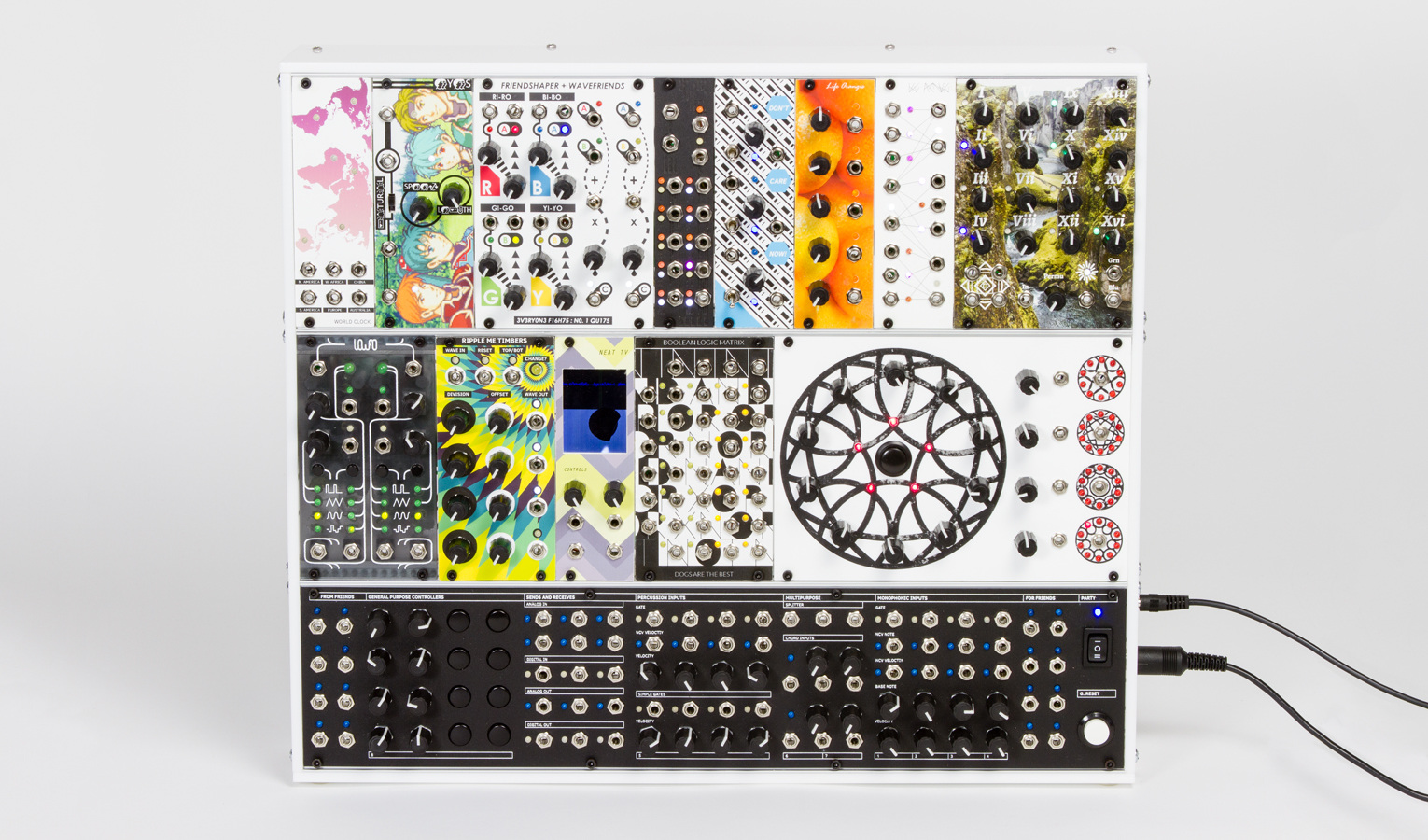
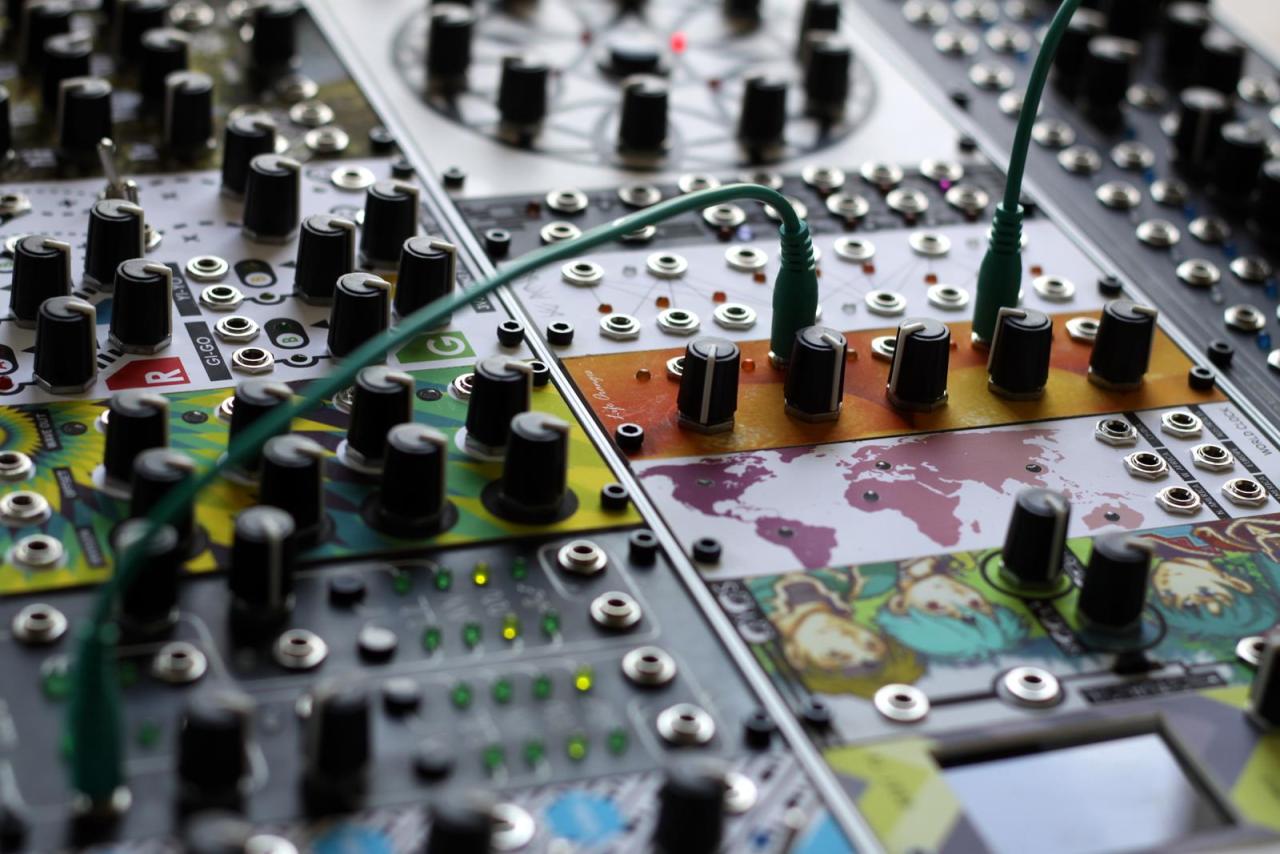
Life Oranges
Life Oranges is the main trigger and gate signal generator for Theseus. The module produces five square waves. The topmost controller determines a main frequency. The remaining four channels produce signals at varying divided rates of the main frequency. The value of the divisor is set by a corresponding rotary controller. Divided signals are crucial in developing rhythmic patterns, syncing modules, and offsetting sequences. Life Oranges work well with the Muxquencer, Boolean Logic Matrix, and Mandalatron modules.
Don't Care Now
Don't Care Now is a three channel square wave generato with the option for frequency modulation input. The switch located on each channel toggles between coarse and fine frequency adjustments. The graphic design of Don’t Care Now is meant to convey a sense of modulated percussive frequencies.
World Clock
World Clock is a simulation of birth rates. Data points from the United Nations Children's Fund's 2013 report on annual number of births were used to calculate the frequency at which births occur in a variety of places across the planet. Essentially, LED flashes indicate live births in simplified real-time for the year 2013.Frequencies
America: 6.187 sec
Western Africa: 1.888 sec
China: .843 sec
South America: 2.925 sec
Australia: 95.642 sec
Europe: 4.382 sec

Eyes
Fire Emblem, a 2003 Gameboy Advance Game from Nintendo and Intelligent Systems, features a collection of heavily armored warriors engaging in combat to save their world from the forces of evil. Cut scenes between combat events are utilized to progress the story. Up to four characters are presented on screen from the chest up with text bubbles appearing above whoever is currently speaking. During these scenes, characters will blink intermittently. These blinking events are the driving force behind the Eyes modules.An hour long portion of the game was recorded using screen capture software. Processing was then used to count the milliseconds between each character's blinks to produce a data table. This data table was then uploaded as firmware to the Eyes module's microcontroller. The blinking LEDs are perfect copies of the original blinks found in the game.
Eyes also employs a switch that allows the user to change the overall rate that the blinking samples are played back. One final controller allows the duration of each blink to be extended.

Missing No.
Missing No. is the strange mutable module of the collection. Its graphic design is deliberately vague. Inputs and outputs are not easily identifiable either. The module's greatest strength lies in this abstraction for it can be reprogrammed to perform any task that requires up to 15 input/output jacks and 12 LEDs.Literal Routing
This arrangement sets Missing No. to take a single or collection of input signals and either select which is to be routed to an output or which output is to be selected. This is a valuable function for triggering subsections of compositions.
Random Select Out
In this case, three groups each posses a single input. When the input receives a positive voltage it will send an equivalent message randomly to one of the channel's three outputs. This mode works well with creating shifting percussive patterns that need to be offset from one another. For instance, it's suitable for creating a semi-random bass drum and snare beat.
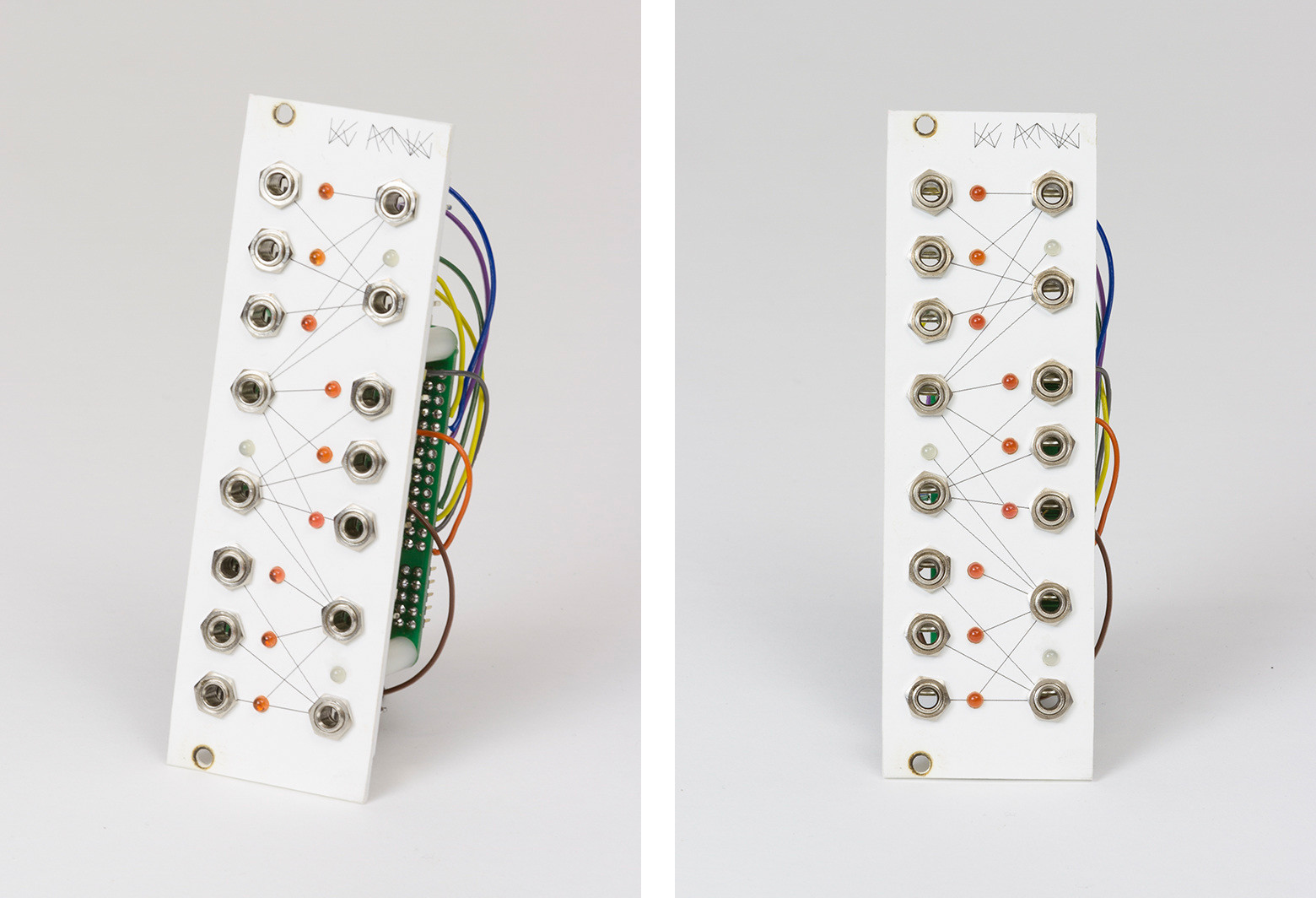
Boolean Logic Matrix
The Boolean Logic Matrix accepts gate signals on each of its axes. A logic operation at the XY coordinates of the inputs is performed and a processed signal output. The Logic Matrix offers AND, OR, NOR, NAND, XOR, XNOR, and NOT logic functions with the last pertaining exclusively to inputs on the X axis. 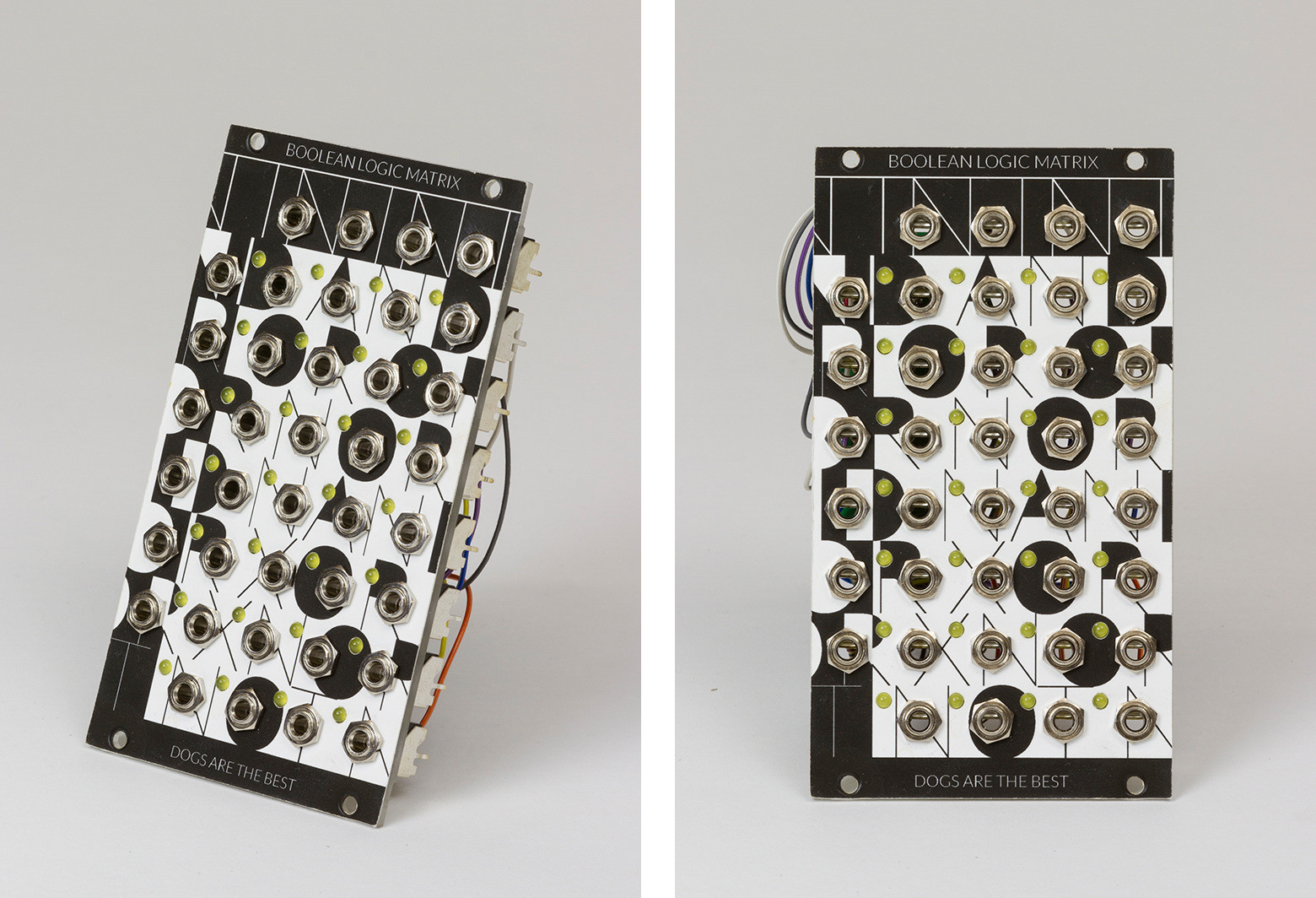
Maht Dvdr
Maht Dvdr is the most complex module in Theseus. Coincidentally, it also happens to be the slimmest and most graphically detailed. Unlike the other modules that produce simple sequences or steady patterns, Maht Dvdr possesses the ability to create elaborate and evolving compositions through an automated routing system.The module is driven by a master clock. With each trigger signal it receives an onboard counter increases by one. Sixteen frequencies, each a division of the current counter value, run in the background. These channels are accessed and routed to each output using three inputs. The first receives a voltage that determines which of the ten output positions to select. The second input determines what divided frequency to assign to that output. Lastly, a latch input locks the selected divided frequency to the selected output channel.

Lowfo
Lowfo is a four channel low frequency oscillator. Each channel is capable of producing square, triangle, ramp, sawtooth, and random waveforms. The frequencies of the oscillators are determined firstly by a rotary controller and secondly by a modulation input. Waveforms are selectable by a small pushbutton located directly above the LED bank. The leftmost and rightmost oscillators can have their signals reset by an external trigger signal located near the top of the module.
Friendshaper & Wavefriends
This module is composed of two functional components that can be used independently or in tandem.Friendshaper
Friendshaper is a four channel waveform attenuator. Each channel is composed of an analog input and output as well as a rotary controller for constraining and transposing the waveform. This ability becomes valuable when working with existing commercial software where ranges for controllers cannot be remapped.
Wavefriends
Wavefriends takes the outputs from each of the four channels from Friendshaper and pairs them. These paired signals will be averaged or multiplied together to create a summed waveform as an output. The final rotary controller determines the ratio of how much either waveform is present in the mathematical operation performed. This can be used to create interesting waveforms or as a mixing tool to smoothly transition between two waveforms.

Ripple Me Timbers
Ripple Me Timbers is another of the more complex modules found in Theseus. It records incoming waveforms and then allows the user to playback the recorded information at a reduced speed. In this instance, slower speeds are determined by a divided frequency rate. Four channels are available for playing the waveform back at altered speeds. This process effectively creates rhythmic harmonics of the input signal. An offset controller on each channel allows the user to set the starting point of each sample in relation to the original signal.
Muxquencer
The Muxquencer is a union of the functionalities of a step sequencer and a multiplexer. In this case, four selection inputs are used to select a step and route its value to the output. In addition, this module allows access to permutations of the selection inputs. Blue LEDs indicate the original binary selection while green represents a permutation of the selection pins. This allows the same information to create two entirely different pattern sets. The permutation controller is also voltage controllable; meaning feedback from the Muxquencer's values can be used to alter its own pattern.
Mandalatron
Mandalatron is a four channel ten step sequencer. Each channel possesses the same values set by the ten central rotary controllers, but with isolated clocks and sequence lengths. When the clock input of a channel is triggered, the sequence will advance by one step and reset to the first step at the point designated by the sequence length controller. This arrangement and iteration of channels allows for complex harmonic rhythms to be created easily. It was designed with pitch output in mind, but these voltages can be used to modulate other variables such as note length and velocity to great effect. 
Neat TV
Neat TV is the only utility module found in the collection. It acts as a standard oscilloscope by receiving waveforms and producing a graphic visualization. Neat TV supports two voltage inputs each with a bypassed output and individual refresh control rates. Future programs for the module may include abstract and aesthetic pattern visualization generated from incoming signals.
Controller Bay
The Controller Bay is a bank that receives all signals within the module system that will be translated to a digital protocol for interfacing with software. There are several sub-modules within the Controller Bay.From Friends & For Friends
The Theseus platform supports a bus system that allows signals from other systems to be shared with another users system. From Friends compliments the For Friends section on the far right of the Controller Bay. Signals plugged into For Friends will be received on another user's From Friends section. The simple communication protocol allows for a new kind of sharing not previously seen in modular systems. Feedback and reprocessing become possible and will likely lead to interesting results.
General Purpose Controllers
This section of Controller Bay contains eight rotary controllers and eight pushbuttons. They act as normal controllers and function independently of the modular aspects of Theseus. The pushbuttons can be set to toggle or momentary functionality via the Theseus software interface in Max.
Sends & ReceivesThese inputs act similarly to the general purpose controllers except that they can be set and activated using signals from Theseus modules. There are six inputs for analog voltages and another three for digital ones. Accompanying these inputs are sets of digital and analog outputs . These outputs act as a means to bring information from a user's software into the modular system.
Percussion Inputs
Percussion Inputs is two banks for four channel monophonic gate inputs. Both banks allow the user to set the velocity of each note using a rotary controller. Velocity modulation is only possible on the top bank. Note values are hardwired in this case and can only be changed using the Max interface.
Chord Inputs
This section is an experimental section of the Controller Bay and something not possible in analog systems. Chord Input needs only one analog input to produce a note on and off signals. This is accomplished by automatically creating the message if the analog message has changed in value. This is very useful when used with a step-sequencer which usually requires 2-3 connections. Due to the nature of this message its length must be set using a rotary controller. Additional features include modulation input for length and a velocity controller with modulation input.
Monophonic Inputs
These inputs are setup in the same manner as the Percussion Inputs except there are only four channels and each channel possess another controller and accompanying modulation input for pitch.
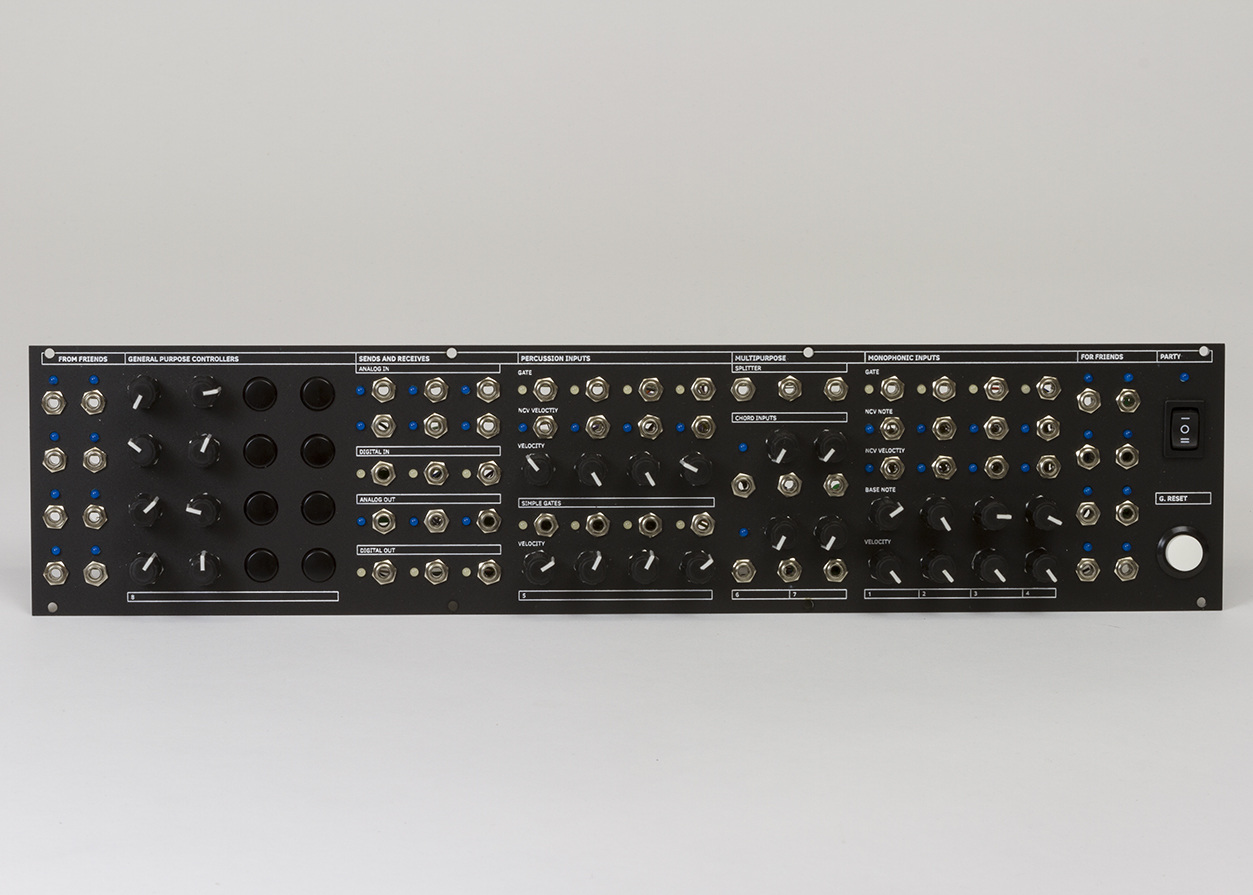
Brendan is a Brooklyn-based designer
hello@brendanbyrne.info
hello@brendanbyrne.info